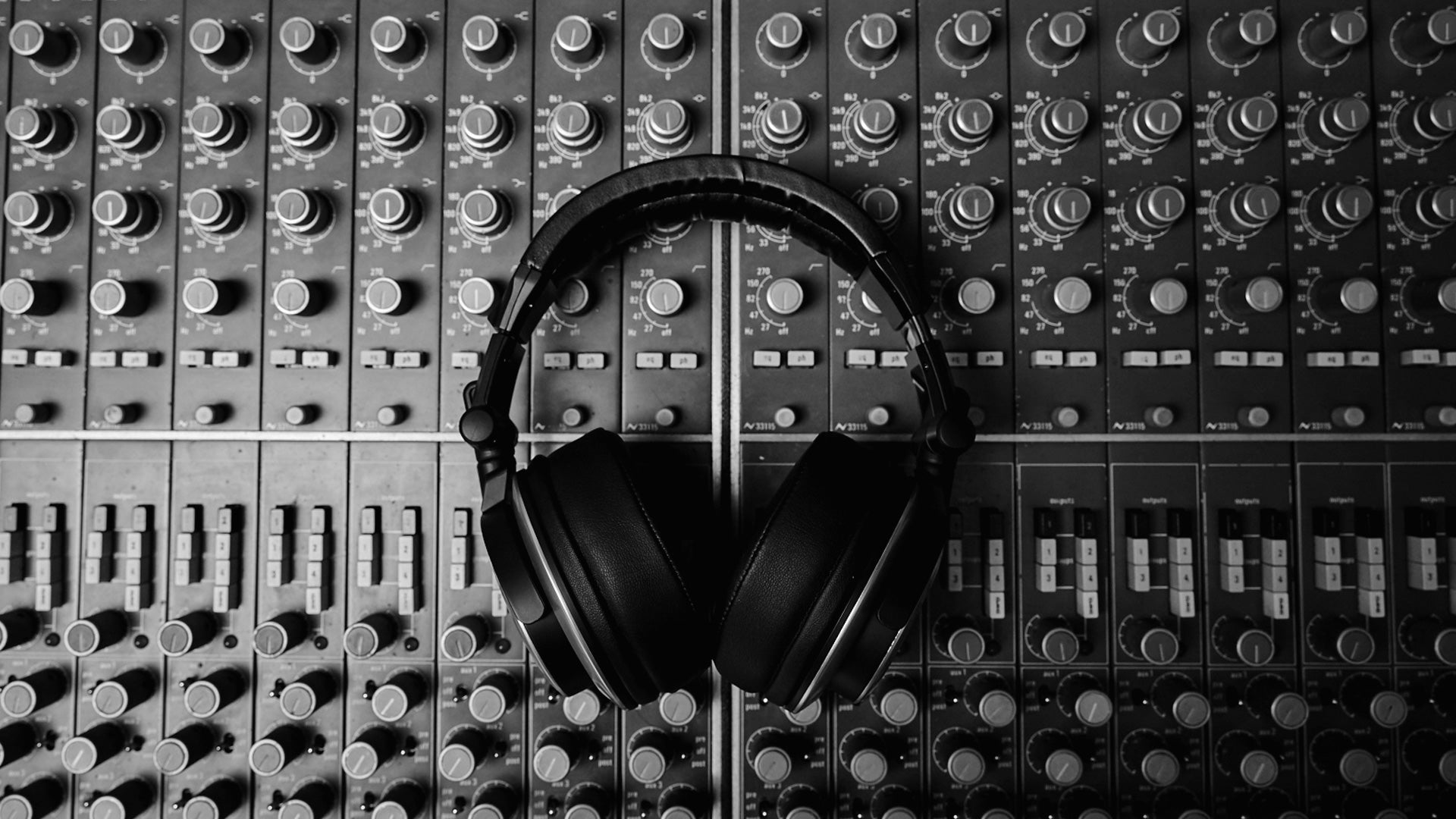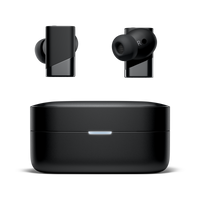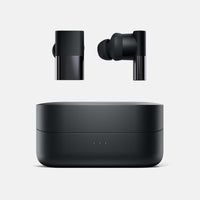
Explaining The Audio Frequency Spectrum: Bass, Mids, and Treble
As human hearing spans from 20 Hz to 20 kHz, so does the audio frequency spectrum. If you’ve heard someone talk about the bass, mids, and treble of a balance, they are referring to classifications of specific frequency ranges within the 20 Hz to 20 kHz thresholds.
Seasoned audio engineers and audiophiles can wax poetic about this stuff, but a casual listener might be left scratching their head when it comes to the categorizations of various frequency ranges.
If you fall into the latter category, this article will give you an in-depth explanation of what those audio nerds are talking about when they refer to the "mid-bass," "upper mids" or "low treble" of a balance. We'll be outlining the relevant terminology, the specific frequency ranges that apply to those terms, and the instruments/tonal qualities that are associated with each range.
If you're completely new to the concept of audio frequency and its associated terms, you might want to check out our beginner's guide before continuing on to the next section.
Understanding the Terms and Characteristics of Different Frequency Ranges

Before we get into the thick of it, it's worth noting that the below categorizations vary a bit depending on who you talk to. For example, some people might say sub-bass spans from 20 - 50 Hz, some might say it's 20 - 80 Hz, and still others might say it's 20 - 100 Hz.
Bickering over the particular terminology and classifications of various frequency ranges is less important than simply understanding the effects they have on a balance. Just something to keep in mind as you read on.
20 - 80 Hz : Sub-bass
Sub-bass, or simply "subs," refers to the absolute lowest frequencies within the standard 20 Hz to 20 kHz range of human hearing. These frequencies are so low that their qualities are frequently felt by our ears more than they're really heard. This is particularly true for frequencies below 50 Hz, which is considered the true sub-bass threshold in some audio circles.
Too much sub-bass can make a balance sound fat and undefined, while too little sub-bass can lead to a weak balance that lacks proverbial oomph.
Adjectives and descriptions that correspond with sub-bass frequencies: rumble, energy, force, felt in the body.
Examples of sounds with heavy sub-bass character: thunder, earthquakes, the lowest notes on a bass guitar (open E string = 41 Hz), really deep synths, the lowest tones of kick drums, 808 kick drums.

80 - 180 Hz : Mid bass
Mid-bass is where the “bodies” of low-end parts reside. While subs deliver a physically felt intensity and energy, mid-bass is where lower frequencies become more noticeably tonal.
Too much mid bass can make a balance sound overly "boomy" and heavy. Too little mid bass can detract from low end presence, impact, and/or distinction in the overall balance.
Adjectives and descriptions that correspond with mid-bass frequencies: boom, slam, strength, groove, bass body, punch.
Examples of sounds with heavy mid-bass character: Bass lines, the bodies of kick drums, the fundamental notes of baritone saxophones, deep voices.
180-400 Hz: High Bass and Low Mids
The point at which the line between low end and midrange becomes blurred. It's a particularly sensitive frequency range that can often make or break a balance.
Too much high bass and low mids in a balance can produce a blurry, muddy tone and lead to a poor distinction between the low end and midrange. Too little high bass and low mids can produce a "cold" or "sterile" effect. A goldilocks balance in this frequency range can produce a pleasant "warmth."
Adjectives and descriptions that correspond with high bass and low mid frequencies: warmth, mud, "brown," bloat, meaty, lush.
Examples of sounds with a heavy high bass/low mid character: rhythm guitars, the fundamental notes of masculine vocals, snare drum transients, tom-toms.

400 Hz - 2 kHz: Center Mids and Upper Mids
This frequency range is often the busiest part of a mix, with many of the most important components competing for space - we can generalize and think of it as the “core" of a balance.
Too little midrange can lead to an empty-sounding, "V-shaped" signature. Too much midrange emphasis can lead to a cluttered and "boxy" signature. Cup your hand and speak into it - the change you hear in your voice is the result of midrange resonance, an effect that is commonly referred to as a boxy sound.
Adjectives and descriptions for center mid and upper mid frequencies: driving, boxy, coarse, articulate, brassy, woody, full, chesty.
Examples of sounds with heavy center and upper mid character: vocals and vocal overtones, feminine voices, rhythm guitars, horns, strings, knocking on wood.
2 kHz - 10 kHz: Low and Mid Treble
From here on up, a lot of what we're dealing with is harmonic profiles; that is, higher-pitched overtones that we can think of as radiating off fundamental tones. Humans are particularly sensitive to the area around 4 kHz - so much so that it’s taken into consideration when manufacturers tune headphones and earphones.
Too little amplitude in this region can lead to a muffled and veiled balance, while too much amplitude here can produce a harsh or grating tone.
Adjectives and descriptions for low and mid-treble frequencies: twangy, plucky, bright, harsh, sibilant, grating, glaring, edgy, crunchy.
Examples of sounds with heavy lower and mid treble character: harmonic overtones on guitars, hi-hats, cymbals, "tss" sounds in vocals, the rattle on snare drums, transients (the initial percussive sound of a pick hitting a guitar string is an example of a transient).

10 kHz - 20 kHz Upper Treble
Upper treble, like sub-bass, often presents with less of an outright tonal quality. Changes to upper treble balances often come across with an exposing textural effect on the overall balance.
Too much upper treble can result in a brittle, glassy, and artificial sound. Too little upper treble can result in a dark signature that lacks nuance and detail.
Adjectives and descriptions for upper treble frequencies: wispy, airy, sizzling, lifting, buzzy, granular, needling.
Examples of sounds with heavy upper treble characteristics: the rasp and air in vocals, the buzzy sound in sawtooth synths and woodwinds, the uppermost harmonics on guitars, transients, cymbal and hi-hat decays, reverb, the "spitty" sound of wind instruments in general.
Conclusion
While this article lays down the fundamental frequency characteristics across the audio spectrum, there's only one way to become truly fluent with this information: training your ears.
This can be easily accomplished using the Status Audio in-app equalizer on your wireless headphones or earbuds to hear how boosting or cutting different frequencies affects a balance. For a more intensive approach, you can also take an online "golden ears" quiz to put your ears to the test.
Ready to put what you learned here to practice? Read our guide to equalization for tips and techniques on how to achieve your perfect balance.





